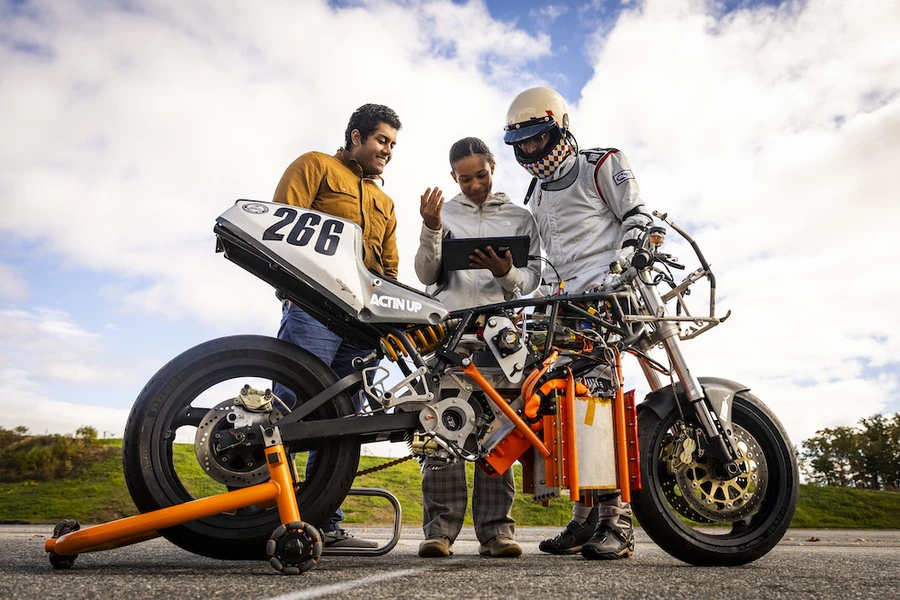MIT's Electric Vehicle Team has taken to the racetrack with a Ducati 900SS that's been gutted and converted into a hydrogen fuel cell motorcycle, hoping to start collecting a few fossil-fuelled scalps. It's also open-sourcing the design for others.
The dozen-strong team decided to build this battery-buffered fuel cell hybrid to get their heads around this higher-density, lesser-used clean fuel source, and hopefully to inspire others to give it a shot in the name of advancing "small hydrogen" vehicle technology.
It's been under construction for about a year at this point, starting out with a 1999 Ducati Supersport donor bike which was apparently christened "Toothless." Personally I'd suggest something a little more intimidating than that, but either way, the combustion engine and all associated trimmings were yanked out, leaving little but a frame with steering, brakes and suspension. Not a roller, either; the 900SS mounts the rear swingarm off the engine casing.

Into this frame, an electric powertrain was fitted, with a small battery and direct chain drive to the rear wheel, as well as mount points for the swingarm. The hydrogen system was added as a range extender, continually drawing energy through a Doosan fuel cell fed by a gas cylinder mounted under the bike's tail.
To address one elephant in the room, yes, it's hideous – but looking sexy isn't part of the brief here.
"Our vehicle is fully designed for research," says project lead Aditya Mehrotra in MIT News, "so you can swap components in and out, and get real hardware data on how good your designs are."
The bike doesn't look real quick in the video below, but the team is preparing to replace the off-the-shelf electric motor with something a little livelier and custom-designed.
Eventually, as it continues to develop, they're hoping it'll show a clean pair of heels to some combustion bikes.
"We've done the proof of concept," says Mehrotra, "so the next step for us is to push the limit of what's possible. How far can we go? How fast can we go? Can we beat a gasoline bike ... we don't know what the answer is and we're going to find out."
There have been a few nibbles at the idea of hydrogen motorcycles over the years from Asian motorcycle manufacturers, most recently Kawasaki, which has modified its supercharged H2 to burn hydrogen in its 1,000 cc combustion engine, and is putting the prototype into testing this year.
But the MIT bike is still quite unique.
"So far as we know," says Mehrotra, "we are the first fully open-source, rigorously documented, tested and released-as-a-platform, [fuel cell] motorcycle in the world. No one else has made a motorcycle and tested it to the level that we have, and documented to the point that someone might actually be able to take this and scale it in the future, or use it in research."
Source: MIT News






